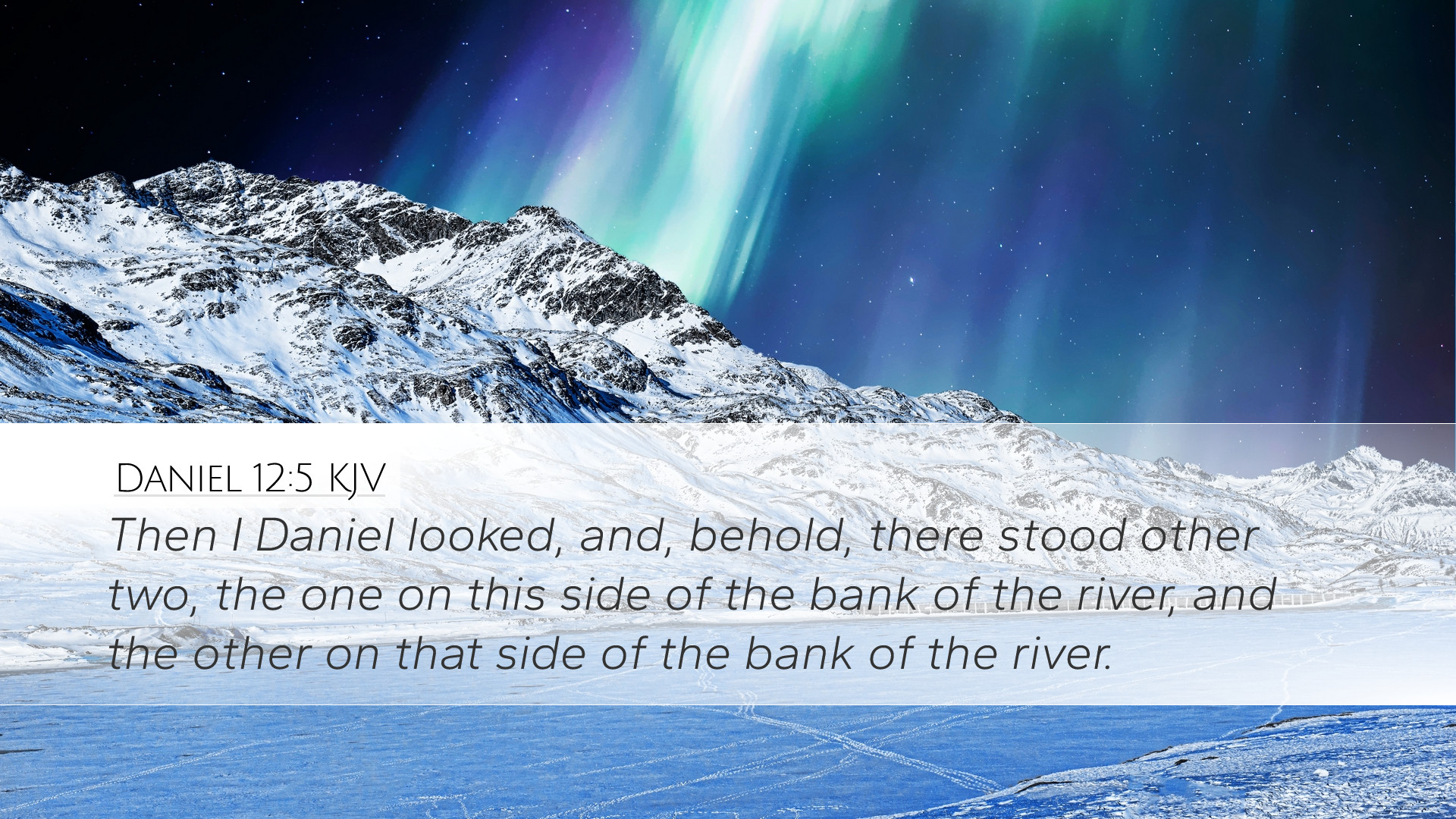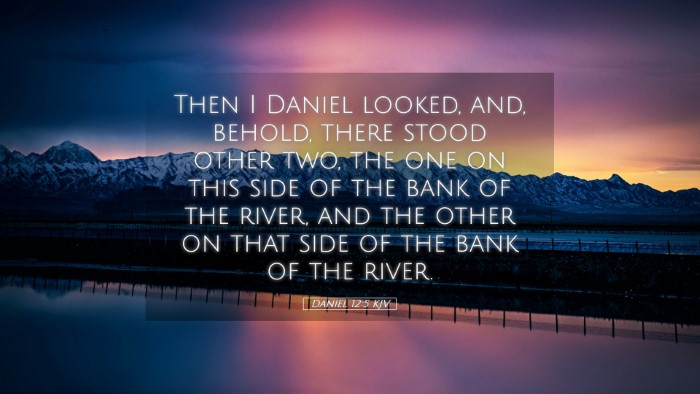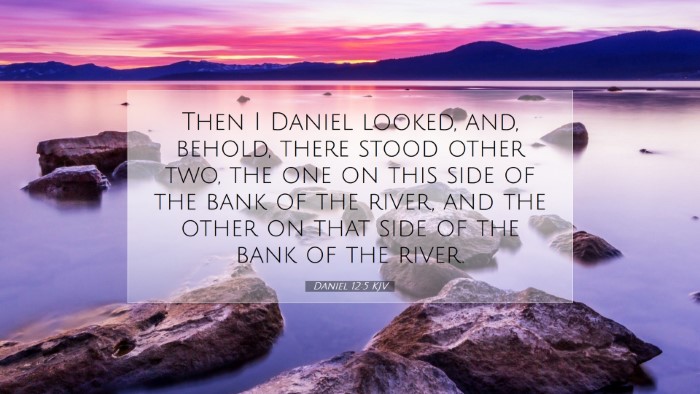Old Testament
Genesis Exodus Leviticus Numbers Deuteronomy Joshua Judges Ruth 1 Samuel 2 Samuel 1 Kings 2 Kings 1 Chronicles 2 Chronicles Ezra Nehemiah Esther Job Psalms Proverbs Ecclesiastes Song of Solomon Isaiah Jeremiah Lamentations Ezekiel Daniel Hosea Joel Amos Obadiah Jonah Micah Nahum Habakkuk Zephaniah Haggai Zechariah MalachiDaniel 12:5
Daniel 12:5 KJV
Then I Daniel looked, and, behold, there stood other two, the one on this side of the bank of the river, and the other on that side of the bank of the river.
Daniel 12:5 Bible Commentary
Commentary on Daniel 12:5
Daniel 12:5 states: "Then I, Daniel, looked, and behold, there stood other two, the one on this side of the bank of the river, and the other on that side of the bank of the river." This verse offers a rich tapestry of interpretation that is ripe for exploration among pastors, students, theologians, and scholars.
Contextual Background
In order to fully grasp the nuances of this verse, a review of the immediate context in which it appears is essential. Daniel 12 is the conclusion of a prophetic vision that encompasses various themes, including resurrection, judgment, and the ultimate sovereignty of God. The setting of the river—the Tigris or Euphrates—represents not just a geographical marker but serves as a symbolic element that reflects separation, boundary, and divine intervention throughout the prophetic literature.
Analysis of Key Elements
The Figures on Either Side
Matthew Henry emphasizes the presence of two figures representing the celestial dynamics at play during the final days, indicating the engagement of God’s providence directly within earthly affairs. The two figures may signify the ministries of angels whose guidance and messages are vital for understanding the prophecy’s implications (Matthew Henry's Commentary).
Location and Symbolism
Albert Barnes notes the importance of the river, suggesting that the angels on both sides symbolize the spiritual barriers and supports in the prophetic revelation that Daniel is receiving. The distinct locations of the angels also suggest a duality, perhaps indicating the two stages of revelation—one past and one future. The rivers of Babylon had previously served as a backdrop for lament and captivity, but here they are recontextualized as a setting for divine communication and assurance (Barnes' Notes on the Bible).
The Nature of Daniel’s Vision
Adam Clarke observes that the act of Daniel looking signifies an earnest seeking for understanding. This looking may highlight the challenge of perceiving God's will amidst trials, reinforcing the theme of discernment in the face of prophetic mysteries. Daniel's readiness to observe the scene speaks volumes about his spiritual stature as a seeker of truth.
Theological Implications
The intersection of the celestial and the terrestrial in this verse mirrors the complex relationship between God and humanity. The existence of heavenly beings at a critical moment in Israel's prophetic history illustrates God's ongoing involvement with His people. Each figure standing on opposite banks can be seen as a representation of God's advocacy for both justice and mercy, themes pivotal to understanding eschatological events.
Implications for End-Time Theology
This imagery lends itself to discussions surrounding eschatology. The vision signified in Daniel 12:5 suggests that divine revelations will continue to be a guiding force amidst chaos, supporting the belief in God’s faithful presence during tumultuous times. Just as these beings stand firm on either side of the river, believers are assured of divine support as they navigate the uncertainties of life and the end-times (Clarke's Commentary on the Bible).
Pastoral Application
For pastors and church leaders, the verse is a reminder of the importance of seeking divine wisdom and understanding amidst the tumult of ministry. The act of looking aligns with the pastoral calling to direct congregations to the truth found in scriptures while being sensitive to the workings of the Holy Spirit. As they guide their flocks, they can draw encouragement from the imagery of divine beings attending to the needs of God’s people, reinforcing a message of hope and assurance.
Conclusion
In conclusion, Daniel 12:5 encapsulates rich theological perspectives and offers deep insights into the nature of divine interactions in prophetic literature. It invites reflection on God’s active role in human history and underscores the necessity of spiritual vigilance and understanding. As integrative theological scholarship continues to explore these passages, the complexities of the message will invariably challenge and inspire all who seek meaning in the divine narratives recorded in Scripture.


